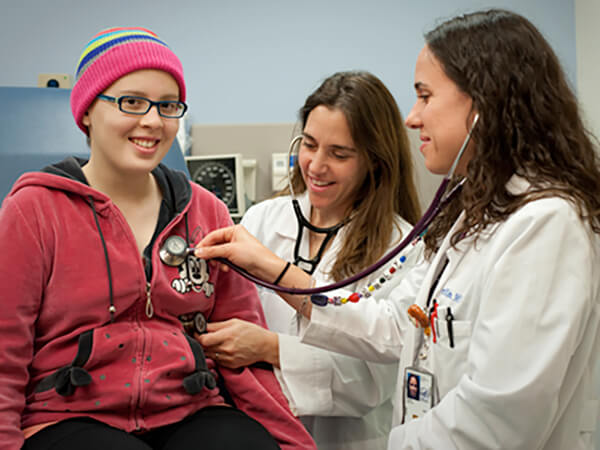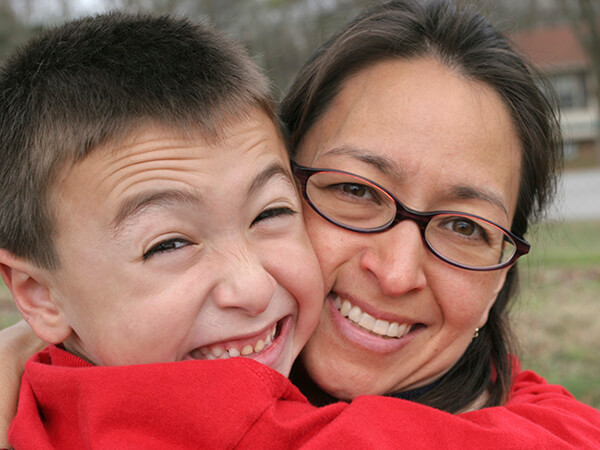05/06/19 ·Cancer.gov
While the completion of your child’s cancer treatment is something to celebrate, it may also bring new challenges. You may worry that the cancer will return. Your child may struggle to get used to new routines. Some families enter this new phase feeling stronger, whereas others are more fragile. Many families are surprised by anxious feelings that arise during this long-awaited time, when they expected to feel only relief. Instead of this being a time to go back to life as it used to be, it may be a time of continued adjustment, as you leave the security of the people on your child’s health care team. Some said the transition to life after treatment took longer and was more challenging than they thought it would be.

It’s both reassuring and essential that your child receive follow-up care from specialists after completing treatment for cancer.
Get a written copy of your child's treatment summary and survivorship care plan. Ask for recommendations to hospitals that offer the type of follow-up or survivorship care that your child needs.
The treatment summary includes both diagnostic and treatment information, such as:
A survivorship care plan (also called a follow-up care plan) is developed for each child. Survivorship care plans are based on the type of cancer and treatment your child received. For example, some children may need to return for visits each month for the first year after they have completed treatment. Others may not need to return as often. Here is the type of information that’s included in follow-up care plans for children who have been treated for cancer, as outlined in the Institute of Medicine's Cancer Survivorship Care Planning fact sheet:
Places that specialize in follow-up care for children who have been treated for cancer are called follow-up care clinics or survivorship clinics. At these clinics, your child will see specialists (in cardiology, endocrinology, fertility, nutrition, psychology, and/or pulmonology, for example) who will monitor your child’s health. These clinics are usually found within hospitals.
If the hospital where your child was treated does not have such a clinic, ask your child’s doctor to recommend one. You can also refer to the Children’s Oncology Group which has a Late Effects Directory of Services that can help you find a hospital that offers services for late effects of treatment for children’s cancer.

While it may take a while for your child to get used to their new schedule, it’s important to check with your child’s doctor for new problems or side effects that don’t seem to get better after treatment.
Although many side effects go away once treatment has ended, long-term side effects, such as fatigue, may take some time to go away. Other side effects, called late effects, may not occur until months or even years after treatment.
Whether or not your child may have late effects of treatment depends on the type of cancer your child had and how it was treated, as well as personal factors, such as:
Late effects may be physical, emotional, or cognitive. Knowing what symptoms to be aware of and when they may occur can help you plan for the needs of your child. Not knowing what to expect can cause anxiety for some parents. However, for other parents, knowing about late effects that may or may not happen to their child in the future can be overwhelming. Many parents find it helpful to ask their child’s doctor what to focus on at each step of their child’s recovery.
Physical late effects involve changes to organs, tissues, and/or body functions. They may affect your child’s growth and development. Some children who have been treated for cancer have many physical late effects, whereas others have relatively few. As you talk with your child’s doctor to learn what to expect, you can learn more about treatments that may increase the risk of physical late effects in Late Effects of Treatment for Childhood Cancer.
Emotional late effects include changes to your child’s mood, feelings, and actions. Many children are very resilient after cancer treatment. Others experience social and/or emotional problems. If your child is not sleeping well and no longer enjoys activities that he once did, it is important to talk with your child’s doctor about having your child evaluated for depression.
Some children develop post-traumatic stress disorder (PTSD). This anxiety disorder arises in reaction to physical injury or severe mental or emotional distress. Symptoms of PTSD may include having flashbacks about diagnosis or treatment, avoiding places that are reminders of the experience, and being fearful, irritable, unable to sleep, or having difficulty concentrating. Ask your child’s health care team to suggest resources for mental health support in your area.
Cognitive late effects include changes in your child’s ability to memorize, learn, and think. These types of late effects are more likely to occur in children who’ve had certain cancers such as brain and spinal cord tumors, head and neck cancers, and some types of leukemia, such as ALL. Treatments such as radiation therapy to the head and certain types of chemotherapy also increase the risk of cognitive late effects. These late effects are also more likely in children who were very young during treatment, who received very high doses of treatment, and whose treatment lasted for a long time.
Children with cognitive late effects may have a more difficult time:
As you talk with your child's doctor, here are some questions to consider:
About treatment
About practical steps to take at home
About follow-up care (plan and schedule)
About possible long-term and/or late side effects
About support and coping
Reviewed: September 10, 2018